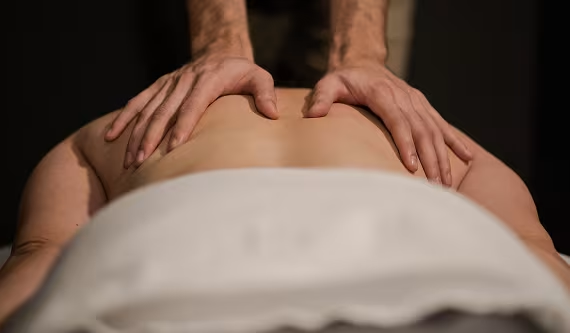Good posture is more than just sitting up straight or standing tall; it’s a fundamental aspect of your overall health and well-being. From the way you feel physically to your mental state, posture plays a crucial role in your daily life. Whether you’re at work, home, or exercising, maintaining good posture can significantly impact your quality of life. In this article, we’ll explore why good posture matters, the benefits it offers, and how you can start improving your posture today.
What is Good Posture?
Good posture refers to the proper alignment of your body parts supported by the right amount of muscle tension against gravity. It involves maintaining the natural curves of your spine and ensuring that your head, shoulders, and hips are in alignment. When you achieve good posture, your muscles and ligaments can work effectively to keep you balanced and reduce strain on your body.
An essential component of good posture is using ergonomic furniture and having a properly set up workspace. Ergonomic chairs, desks, and monitors are designed to support your body’s natural posture, making it easier to maintain the correct alignment throughout the day. For example, an ergonomic chair with proper lumbar support can help prevent slouching, while a monitor positioned at eye level can reduce strain on your neck.

The Health Benefits of Good Posture
Physical Health Benefits
- Improved Spine Health: Good posture helps to maintain the natural curve of your spine, reducing the risk of developing chronic back pain. When your spine is correctly aligned, the pressure on your vertebrae and discs is minimized, allowing them to function optimally.
- Enhanced Breathing: Proper posture opens up the chest cavity, allowing your lungs to expand fully. This can improve your breathing efficiency, increase oxygen intake, and boost overall lung function.
- Better Digestion: Slouching can compress your digestive organs, leading to gastrointestinal issues. Maintaining an upright posture, especially after meals, helps in better digestion and reduces the likelihood of acid reflux or constipation.
Mental Health Benefits
- Improved Mood: There’s a strong connection between your posture and your mood. Studies have shown that sitting up straight can lead to increased confidence and reduced stress levels. Good posture can also help combat feelings of depression and anxiety.
- Increased Confidence: Standing or sitting tall with an open chest can make you feel more self-assured. This body language is often associated with confidence and can positively influence how others perceive you.
For more on the relationship between posture and mental health, check out this study on posture and mood.
The Consequences of Poor Posture
Physical Detriments
- Chronic Pain: Poor posture can lead to persistent pain in the back, neck, and shoulders. Over time, this can develop into more serious musculoskeletal disorders that can severely impact your quality of life.
- Musculoskeletal Disorders: Incorrect posture increases the strain on your muscles, joints, and ligaments, leading to conditions such as carpal tunnel syndrome, tendonitis, and joint degeneration.
- Headaches and Migraines: Tension in the neck and shoulders from poor posture can trigger headaches and migraines, making daily activities more challenging.
Impact on Daily Activities
- Reduced Productivity: When your body is not properly aligned, it can lead to discomfort and fatigue, reducing your ability to focus and be productive at work.
- Impaired Athletic Performance: Athletes rely on good posture for balance, coordination, and power. Poor posture can hinder performance, increase the risk of injury, and affect overall endurance.
- Increased Fatigue: Poor posture can lead to inefficient energy use, causing you to feel more tired and sluggish throughout the day.
How to Improve Your Posture
Daily Habits for Better Posture
- Simple Exercises and Stretches: Incorporate exercises that strengthen your core muscles, such as planks and bridges, into your daily routine. Stretching exercises, like yoga or Pilates, can also help improve flexibility and posture.
- Tips for Sitting, Standing, and Sleeping: When sitting, keep your feet flat on the floor, your knees at a 90-degree angle, and your back straight against the chair. When standing, distribute your weight evenly on both feet, and avoid locking your knees. While sleeping, use a pillow that supports your neck’s natural curve and consider sleeping on your back to maintain alignment.
- Posture-Correcting Devices: Consider using posture-correcting devices like braces, ergonomic chairs, or specialized pillows. These tools can provide additional support and remind you to maintain good posture throughout the day.
When to Seek Professional Help
Sometimes, despite your best efforts, posture issues may require professional attention. If you experience chronic pain, significant discomfort, or if your posture is affecting your daily life, it may be time to consult a healthcare professional. Services like chiropractic care, physical therapy, and massage therapy can provide targeted interventions to correct posture-related problems.
The Role of Therapeutic Massage in Improving Posture
Therapeutic massage plays a vital role in posture correction by addressing muscle imbalances and relieving tension. Massage therapy can help release tight muscles, improve flexibility, and realign the body to its natural posture. Techniques such as deep tissue massage, myofascial release, and trigger point therapy are particularly effective in treating posture-related issues.
For those in Edmonton, consider exploring deep tisue massage Edmonton to find the right massage therapy services that can help you improve your posture.
Posture and Workplace Ergonomics
Setting Up an Ergonomic Workspace
Creating an ergonomic workspace is essential for maintaining good posture, especially if you spend long hours at a desk. Invest in ergonomic office furniture, such as chairs with adjustable lumbar support, desks that are the right height, and monitors positioned at eye level. These adjustments can significantly reduce strain on your body and help maintain proper posture throughout the workday.
Staying Active During Work Hours
Even with the best ergonomic setup, it’s important to stay active during work hours. Incorporate regular breaks to stand, stretch, and move around. Consider using a standing desk or alternating between sitting and standing throughout the day. Simple activities like walking during lunch breaks or doing desk stretches can make a big difference in maintaining good posture.
For more tips on workplace ergonomics, visit this reliable source on ergonomics.
Good posture is a cornerstone of health and well-being. By maintaining proper alignment of your body, you can avoid chronic pain, improve your mood, and increase your overall quality of life. Start by making small changes to your daily habits, investing in ergonomic furniture, and seeking professional help if needed. Don’t wait—take action today to improve your posture and enhance your life.
Additional Resources
For more information on posture, ergonomics, and wellness, check out our related blog posts. Subscribe to our newsletter for regular tips on maintaining a healthy lifestyle and improving your overall well-being.





